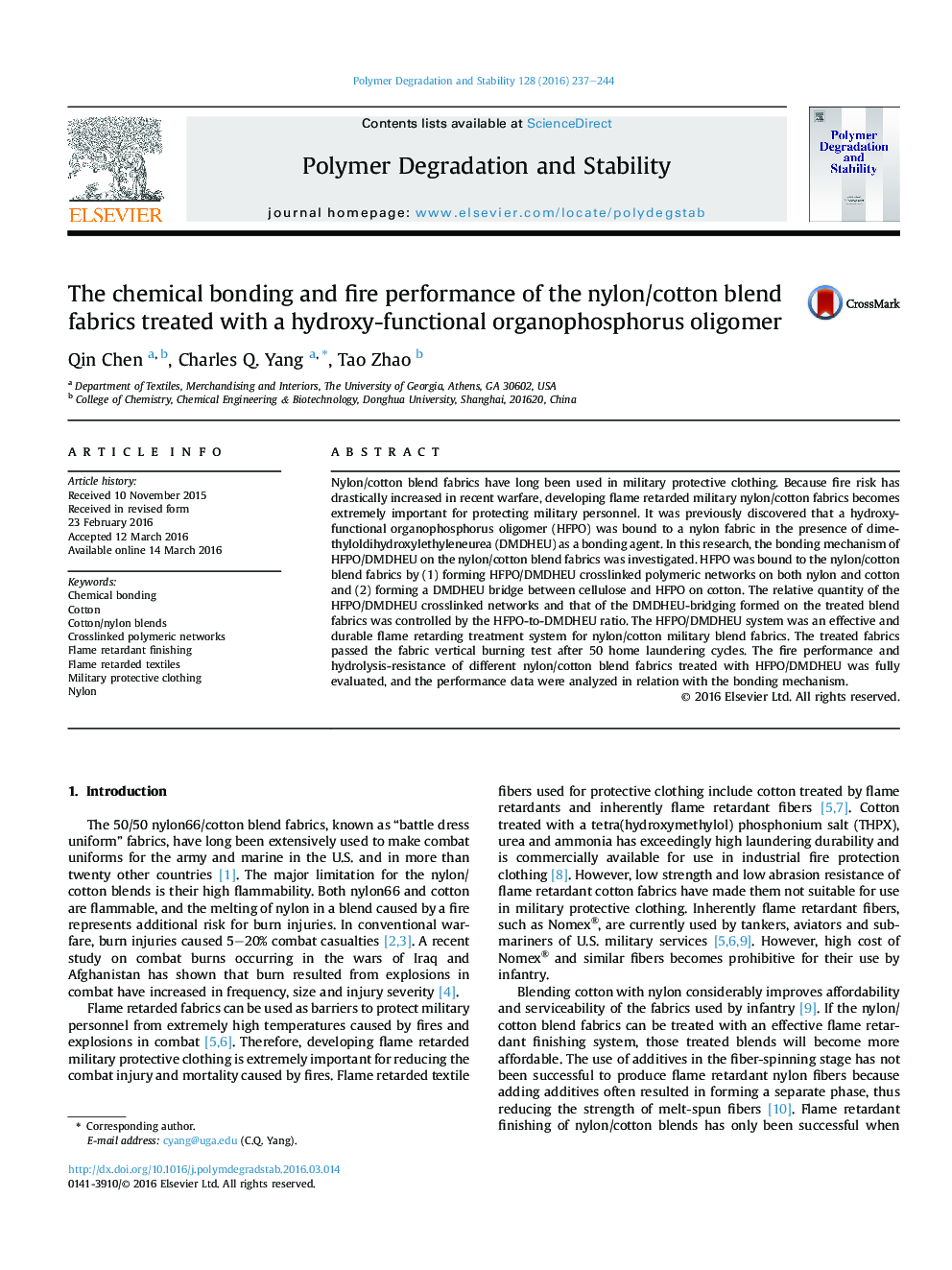| Article ID | Journal | Published Year | Pages | File Type |
|---|---|---|---|---|
| 5201201 | Polymer Degradation and Stability | 2016 | 8 Pages |
Nylon/cotton blend fabrics have long been used in military protective clothing. Because fire risk has drastically increased in recent warfare, developing flame retarded military nylon/cotton fabrics becomes extremely important for protecting military personnel. It was previously discovered that a hydroxy-functional organophosphorus oligomer (HFPO) was bound to a nylon fabric in the presence of dimethyloldihydroxylethyleneurea (DMDHEU) as a bonding agent. In this research, the bonding mechanism of HFPO/DMDHEU on the nylon/cotton blend fabrics was investigated. HFPO was bound to the nylon/cotton blend fabrics by (1) forming HFPO/DMDHEU crosslinked polymeric networks on both nylon and cotton and (2) forming a DMDHEU bridge between cellulose and HFPO on cotton. The relative quantity of the HFPO/DMDHEU crosslinked networks and that of the DMDHEU-bridging formed on the treated blend fabrics was controlled by the HFPO-to-DMDHEU ratio. The HFPO/DMDHEU system was an effective and durable flame retarding treatment system for nylon/cotton military blend fabrics. The treated fabrics passed the fabric vertical burning test after 50 home laundering cycles. The fire performance and hydrolysis-resistance of different nylon/cotton blend fabrics treated with HFPO/DMDHEU was fully evaluated, and the performance data were analyzed in relation with the bonding mechanism.
